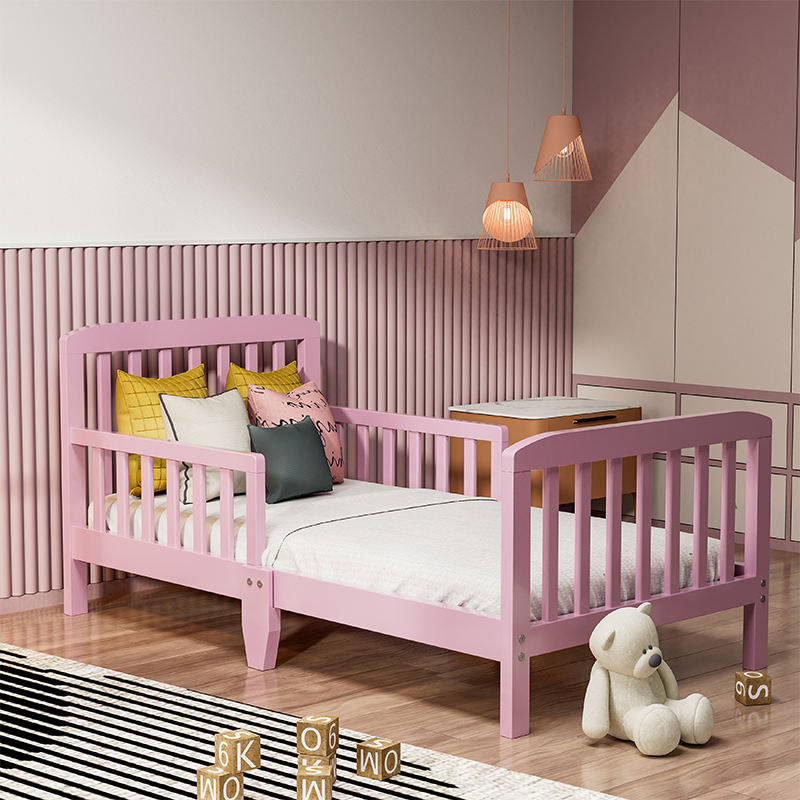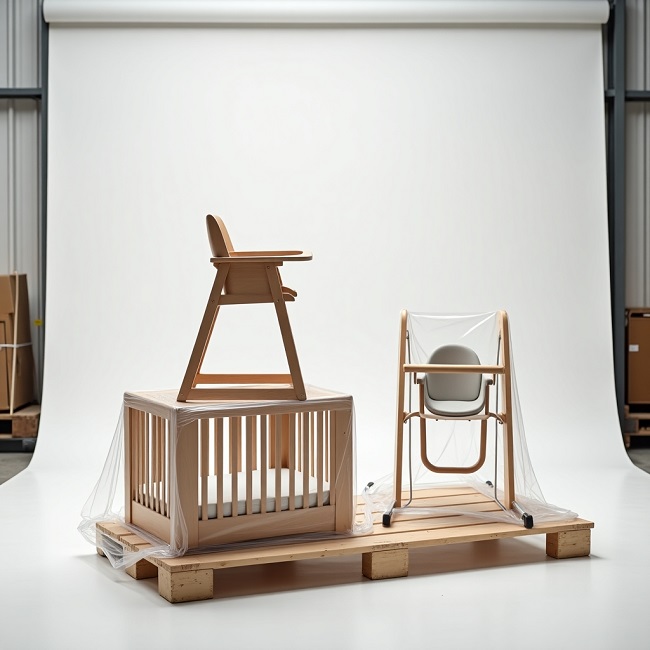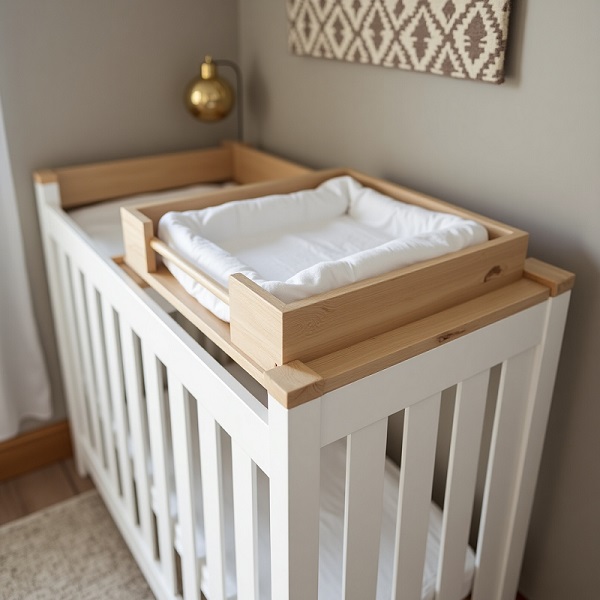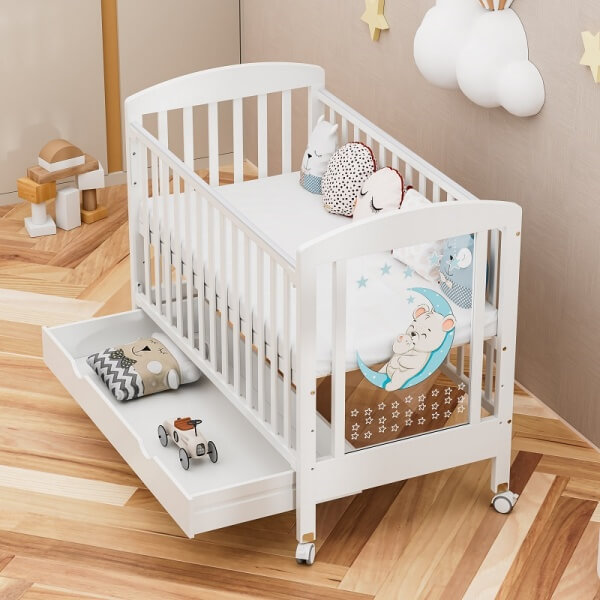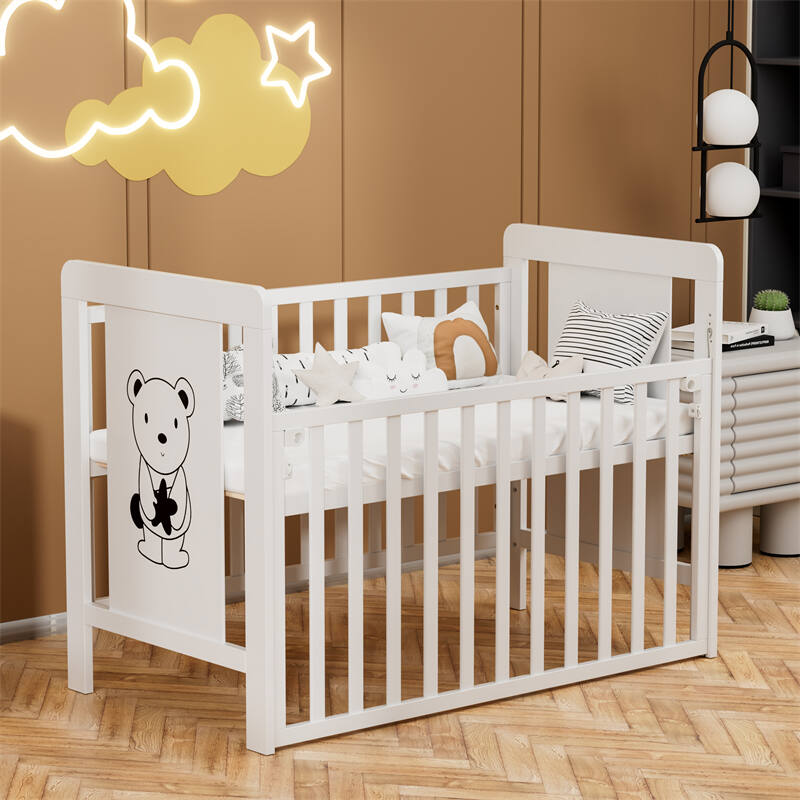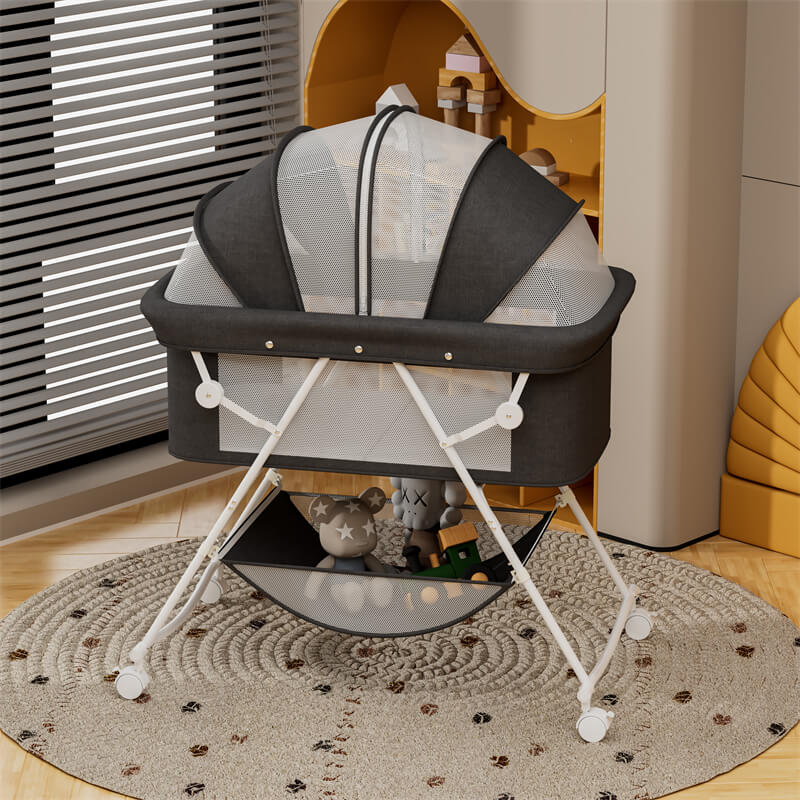As your little one outgrows their crib, the transition to a toddler bed or twin bed can be an exciting milestone. However, it’s essential to understand the differences between these two options to make an informed decision that suits your child’s needs and your family’s lifestyle.
What Is a Toddler Bed?
Toddler beds, as the name implies, are designed to be the inaugural “big kid” bed for your little one, serving as a transitional haven between the crib and a full-sized mattress.
These petite paradises are crafted to accommodate crib-sized mattresses, ensuring a familiar and comforting sleeping surface for your toddler.
One of the standout features of toddler beds is their built-in safety rails or guardrails, which act as a reassuring barrier, preventing accidental tumbles during the night.
What size is a toddler bed?
A toddler bed is small, typically measuring 28 inches by 52 inches, they are a perfect fit for smaller spaces and shared bedrooms.
Toddler beds are usually lower to the ground compared to standard twin or full-sized beds to make it easier for toddlers to climb in and out safely. The height can vary, but it’s often around 20 inches to 25 inches (51 cm to 64 cm) from the floor to the top of the mattress.
However, the actual size of a toddler bed frame can vary depending on the manufacturer and design. Generally, toddler beds are smaller than twin beds but larger than cribs, providing a transitional sleeping option for toddlers.
How Long Does a Toddler Bed Last?
Toddler beds are typically designed for children between the ages of 1.5 to 4 years old, although some children may outgrow them sooner or later.
Generally, toddler beds are suitable for use until your child reaches a height of around 36 inches or starts outgrowing the bed’s length. Most children outgrow their toddler beds by the age of 4 or 5.
Children go through growth spurts at different rates, so a toddler bed may become too small for a child sooner than expected if they experience a rapid growth phase. In such cases, parents may need to consider transitioning their child to a larger bed earlier than planned.
Pros and Cons of Toddler Bed
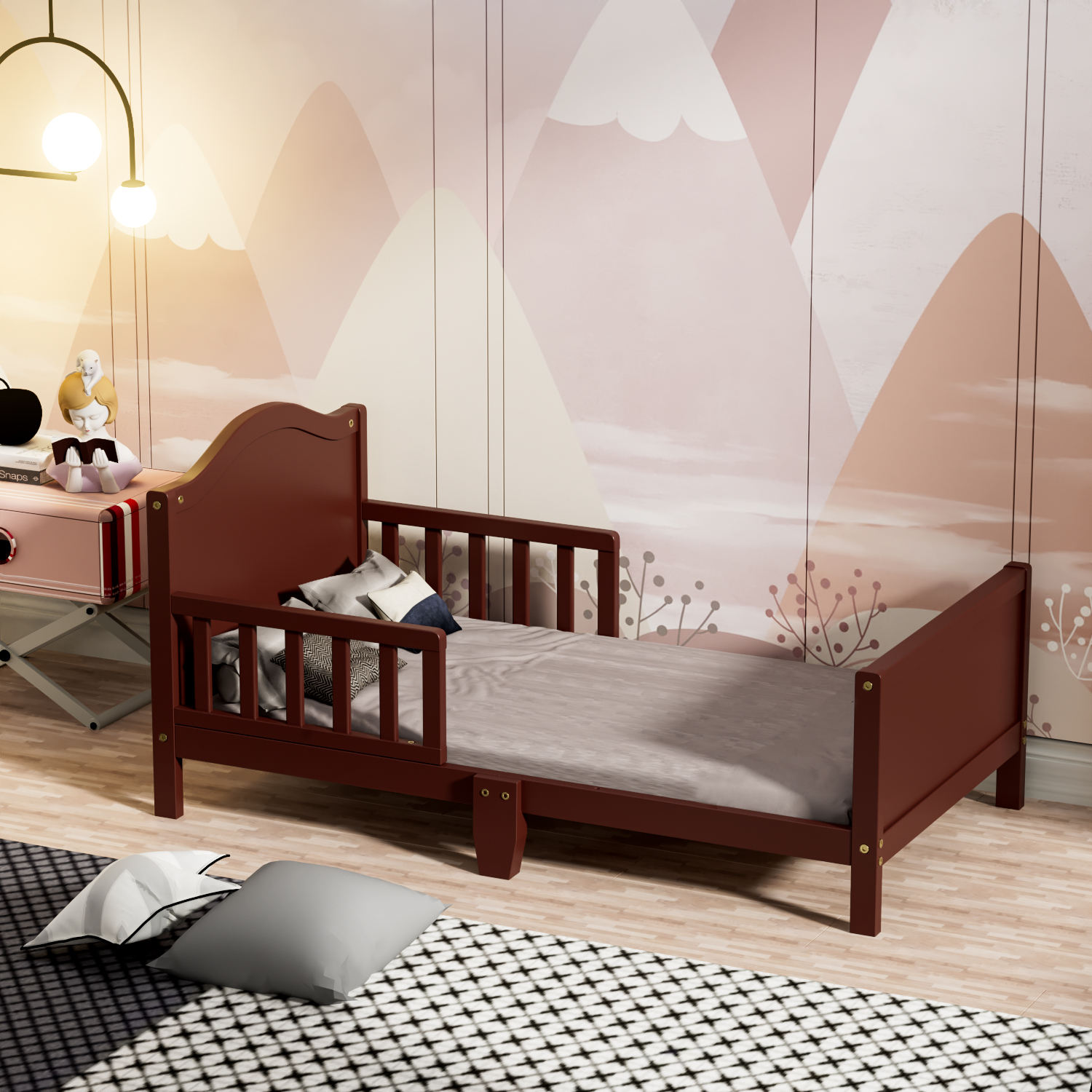
Pros of Toddler Bed
Help Children Transition Better: It provides a gentle segue from the familiarity of a crib, easing your little one into the concept of a “big kid” bed without overwhelming them with excessive space or height. Unlike standard twin or full-sized beds, which can feel vast and intimidating to a young child accustomed to the cozy confines of a crib, toddler beds are designed to be smaller and lower to the ground.
High Security: Toddler beds featuring built-in guardrails or safety rails that serve as a reassuring barrier, particularly for restless sleepers prone to tossing and turning during the night. This added layer of security can alleviate some of the anxiety and worry that often accompany the transition from a crib, where the enclosed structure offers a more confined and secure sleeping environment.
Small Space Options: For families living in smaller homes or apartments, maximizing space is often a top priority. Toddler beds offer a practical solution for such living situations, thanks to their compact size and efficient design. Moreover, toddler beds is well-suited for shared bedrooms, where siblings may be bunking together or where space needs to be allocated for other purposes, such as a home office or guest room.
Interesting Design: One of the delightful aspects of toddler beds is the wide array of captivating designs and themes available to suit every child’s imagination and interests. Whether it’s a sleek and modern design or a whimsical and fantastical theme, these beds add character and charm to the room, enhancing its visual appeal and creating a space that feels fun, inviting, and full of personality.
Cons of Toddler Bed
Limited Lifespan: While toddler beds serve as an intermediate step between cribs and larger beds, they may only be suitable for a relatively short period before children outgrow them. Children undergo rapid physical growth during their early years, and their sleeping needs evolve accordingly. What may initially seem like a comfortable and spacious sleeping option for a toddler may quickly become cramped and insufficient. Parents may find themselves facing the need to purchase a new bed relatively soon after transitioning to a toddler bed, leading to additional costs and logistical challenges.
Restricted Mattress Options: Toddler beds are often designed to fit standard crib mattresses. While this design choice may offer continuity for children transitioning from cribs, it also limits the availability of mattress options. Parents may wish to choose a mattress with specific features such as memory foam or pocketed coils to provide targeted support and pressure relief for their child’s growing body. However, the limited options for crib-sized mattresses may make it challenging to find a mattress that meets these criteria.
Cost: Toddler beds can be an additional expense for parents, especially considering that they may only be used for a relatively short period before children outgrow them. While they are typically less expensive than larger bed sizes, such as twin or full beds, the cost of purchasing a toddler bed, along with bedding and accessories, can add up.
Limited Weight Capacity: Toddler beds are typically designed to accommodate young children, and they may have weight restrictions that limit their use for older or heavier children. This can be a drawback for parents who are concerned about the bed’s durability and safety as their child grows. Exceeding the weight capacity of a toddler bed can compromise its structural integrity and increase the risk of accidents such as collapse or breakage.
What Is a Twin Bed?
Twin beds, are the standard-bearers of the bedroom realm, offering a generous sleeping surface that can accommodate your child’s growth spurts with ease.
These beds provide ample room for your little one to stretch, roll, and indulge in their wildest dreams.
It offers a more long-term solution for your child’s sleeping needs. While they may seem like a bigger leap from a crib, twin beds provide ample space for growth and can accommodate your child well into their teenage years.
what size is a Twin Bed?
A standard twin bed measures 38 inches wide by 75 inches long, providing a significantly larger sleeping surface compared to a toddler bed.
The height of a twin bed can vary depending on the style and design of the bed frame. Standard heights range from around 18 inches to 25 inches (46 cm to 64 cm) from the floor to the top of the mattress surface. This extra space allows for greater comfort and freedom of movement as your child grows.
It’s also essential to consider the clearance space around the bed to ensure comfortable movement and accessibility within the room. Ideally, there should be sufficient space on all sides of the bed for walking, opening doors, and accessing drawers or closets.
How Long Does a Twin Bed Last?
Twin beds are designed to last for many years, potentially accommodating your child from toddlerhood through their teenage years and even into adulthood.
As children enter their teenage years, twin beds continue to provide a practical and comfortable sleeping solution. Even into adulthood, twin beds can remain a viable option for individuals living in smaller spaces or seeking a minimalist sleeping arrangement.
The material quality of a bed is a crucial factor in determining its durability and lifespan. Solid wood beds, in particular, are highly regarded for their longevity and durability, making them a popular choice among consumers.
Unlike beds made from composite materials or particleboard, solid wood beds are crafted from high-quality hardwoods such as oak, maple, cherry, or walnut, which are known for their strength and resilience.
Overall, a well-made single bed that is properly maintained and used within its weight range can last anywhere from five to fifteen years or more.
Pros and Cons of Twin Bed
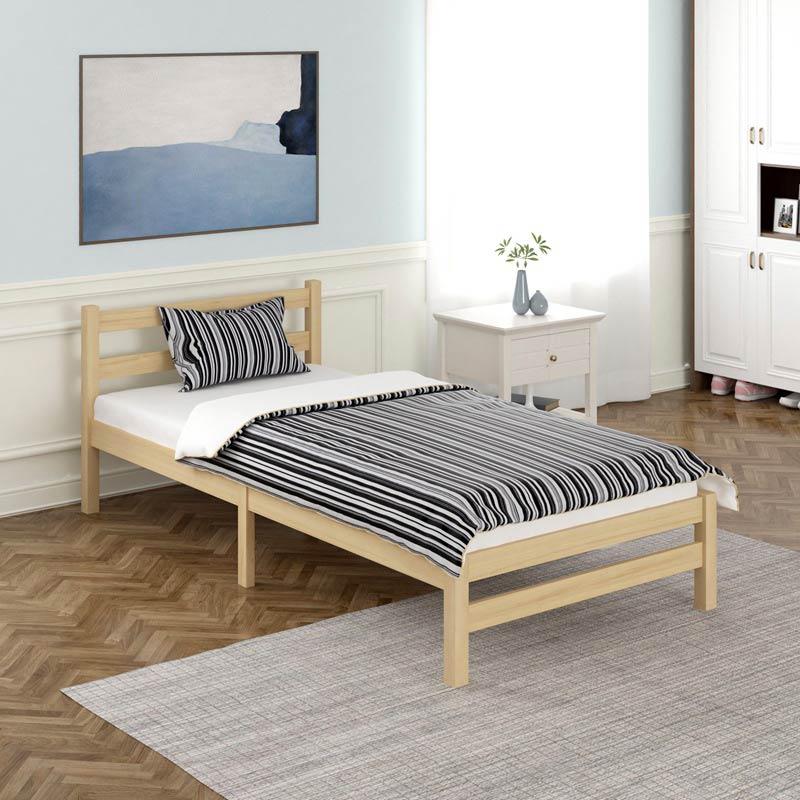
Pros of Twin Bed
Long service life: Twin beds are designed to last for many years, potentially accommodating your child from toddlerhood through their teenage years and even into adulthood.
Ample Room to Grow: With generous proportions, a twin bed accommodates the natural movements of children during sleep, providing ample space for rolling, shifting positions, and indulging in their wildest dreams.
Customizable Comfort: When it comes to firmness, parents can choose from a range of options to accommodate their child’s sleeping preferences and comfort requirements. Parents can choose from various support systems, including innerspring, memory foam, latex, or hybrid mattresses, each offering unique benefits in terms of support and comfort.
Cons of Twin Bed
Transition Challenges: Transitioning from a crib to a twin bed can indeed pose challenges for children, particularly those who are accustomed to the confined space and security of a crib. The sense of security provided by the crib may be difficult to replicate in a twin bed, leading to bedtime struggles, resistance to sleep, and increased nighttime waking.
Safety Considerations: Without built-in guardrails, twin beds may pose a risk of accidental falls. Younger children or those who are particularly active during sleep may be more susceptible to falling out of bed, especially during the adjustment period to a new sleeping environment.
Space Requirements: Twin beds, while providing ample sleeping space, do require a larger footprint in a child’s bedroom compared to smaller options like toddler beds or cribs. This larger size can have implications for the layout and functionality of the room, potentially limiting the available space for other furniture, play areas, or activities.
Tips for Choosing a Toddler Bed and Twin Beds
1. Choose a Toddler Bed
- Safety Features: Look for models with built-in guardrails or safety rails to prevent your child from rolling out of bed during sleep.
- Sturdy Construction: Opt for a toddler bed made from durable materials such as solid wood or metal to ensure stability and longevity. Avoid beds with sharp edges or protruding hardware that could pose a safety hazard to your child.
- Storage Options: Toddler beds with built-in storage drawers or shelves can help maximize space in a small room and keep clutter at bay.
- Low Height: Choose a toddler bed with a low height that allows your child to easily climb in and out of bed independently.
- Design and Style: Select a toddler bed with a design or style that complements your child’s personality and preferences. Whether it’s a classic wood finish, playful colors, or themed motifs, choose a bed that reflects your child’s interests and creates a fun and inviting sleep environment.
- Ease of Assembly: Look for toddler beds that are easy to assemble and come with clear instructions and all necessary hardware included. Consider your own DIY skills and available time when choosing a bed that requires assembly, and opt for a model that you feel confident in assembling yourself or with the help of a partner.
- Convertibility: Some toddler beds can convert into a daybed or a full-size bed, extending their lifespan and providing more versatility.
2. Choose a Twin Bed
- Headboard and Footboard Options: Consider adding a headboard and footboard for a more polished look and to protect walls from scuffs and marks.
- Under-Bed Storage: Look for twin beds with under-bed storage drawers or trundle beds to maximize space and organization.
- Adjustability: Some twin beds offer adjustable height options, which can be useful as your child grows taller.
- Choose the Right Mattress: Consider factors such as mattress type (e.g., innerspring, memory foam, hybrid), firmness level, and size compatibility with the bed frame.
- Set a Budget: Determine your budget for purchasing a twin bed and stick to it. Twin beds are available at a wide range of price points, so you’re sure to find one that fits your budget while meeting your needs in terms of quality and style.
Alternative Sleep Solutions

If neither a toddler bed nor a twin bed seems like the perfect fit, fear not, for there are alternative sleep solutions that may better align with your child’s needs and your family’s lifestyle.
1. Montessori Floor Bed
A Montessori floor bed is a mattress placed directly on the floor, promoting independence and freedom of movement for young children. This minimalist approach fosters a sense of autonomy and can be a suitable option for children who struggle with the confines of traditional beds.
2. Bunk Beds
For families with multiple children or limited space, bunk beds offer a space-saving solution by vertically stacking two beds. These versatile structures not only maximize floor space but also add a touch of adventure to your child’s sleeping quarters. Bunk beds come in various configurations, including twin-over-twin or twin-over-full, providing flexibility as your children grow.
3. Trundle Beds
Trundle beds feature a pull-out bed stored underneath the main bed, making them an ideal choice for accommodating sleepovers or overnight guests. They can be found in both toddler and twin bed sizes.
4. Daybeds
Daybeds seamlessly blend the functions of a bed and a seating area, offering versatility and comfort. During the day, they serve as a cozy nook for reading or lounging, while at night, they transform into a cozy sleeping sanctuary. They can be a stylish and functional option for older children’s rooms or multipurpose spaces.
5. Convertible Cribs
Some cribs are designed to be convertible, allowing you to transform them into toddler beds or even twin beds as your child grows. This option not only provides long-term value but also offers a familiar and consistent sleeping environment for your little one.
How to Get the Toddler to Stay in Bed?
Getting a toddler to stay in bed can be a challenge, but with patience, consistency, and a few strategies, you can help establish healthy sleep habits. Here are some tips to encourage your toddler to stay in bed:
- Set a Regular Bedtime: Establish a tranquil bedtime routine to gently guide your toddler into a peaceful state before sleep.
- Set Clear Expectations: Clearly communicate your expectations to your toddler regarding bedtime behavior and staying in bed. Use positive language and reinforcement to encourage cooperation and adherence to bedtime rules.
- Create a Comfortable Sleep Environment: This includes selecting a comfortable mattress and bedding, controlling the room temperature, and minimizing noise and distractions.
- Use Bedtime Rewards or Incentives: This could involve earning stickers, tokens, or small treats for each successful night of staying in bed until morning.
- Address Fears and Anxiety: Offer reassurance and comfort by talking about bedtime monsters or other worries in a positive and supportive manner. You can also use calming techniques such as deep breathing or visualization to help your toddler relax and feel safe in bed.
- Be Firm and Consistent: If your toddler gets out of bed, gently but firmly guide them back to bed without engaging in lengthy discussions or negotiations. Stay calm and consistent in your response, reinforcing the expectation that bedtime means staying in bed until morning.
Conclusion
As you embark on this exciting chapter of your child’s development, remember that there is no one-size-fits-all solution. The choice between a toddler bed and a twin bed is a deeply personal one, shaped by your child’s unique needs, your family’s lifestyle, and your collective preferences.
Embrace this journey with an open mind and a willingness to adapt. Involve your child in the decision-making process, fostering a sense of ownership and excitement for their new sleeping sanctuary.
Recommended Related Articles:

